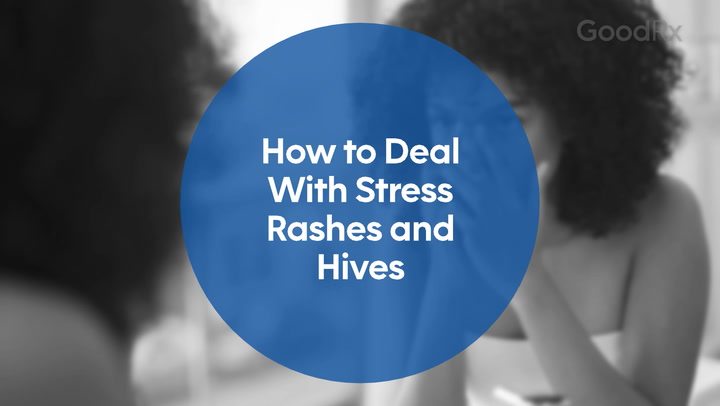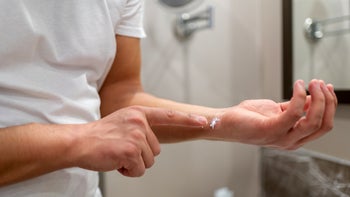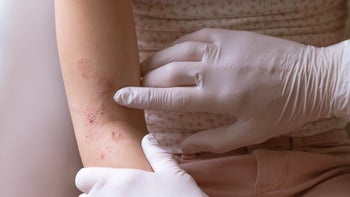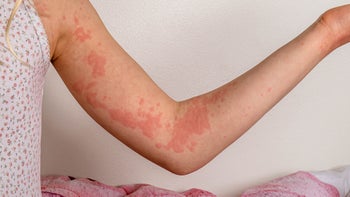
Hives vs. Bug Bites: How to Spot the Differences (With Images)
Key takeaways:
Bug bites and hives are common rashes that cause itchy bumps.
Sometimes bug bites can look like hives, but there are a few important characteristics that you can look for to tell the difference between hives and bug bites.
Most of the time you can treat hives and bug bites easily at home, but there are some cases when you should contact your healthcare professional.
Table of contents

Not all itchy rashes are alike. Hives and bug bites are common rashes that can easily get confused for one another. They can both cause itching, redness, and bumps on your skin. So how can you tell if a rash is from hives or insect bites?
Hives and bug bites have different causes and characteristics. In this article, we’ll walk you through how to tell the difference between hives and bug bites and when to get medical attention for them.
What do hives look like?
Hives, also known as urticaria, are fairly common. They affect up to 1 in 5 people at some point in their life.
Search and compare options
When someone develops hives, their skin forms swollen, itchy, and sometimes bumpy patches of skin, commonly called “welts” or “wheals.” In fair skin, they’re usually red. But in darker skin tones, they may be violet or skin-colored. They can occur anywhere on your body.
Hives can develop due to a variety of things including:
Allergens like plants or pet dander
Unknown triggers
Usually, wheals appear quickly and disappear just as fast within a few hours — and then reappear in a different location. With acute hives, symptoms go away in days to weeks. But with chronic hives, wheals can come and go over weeks to months. If your hives aren’t going away, or you can’t figure out the cause, it may help to see a dermatologist.
Pictures of hives
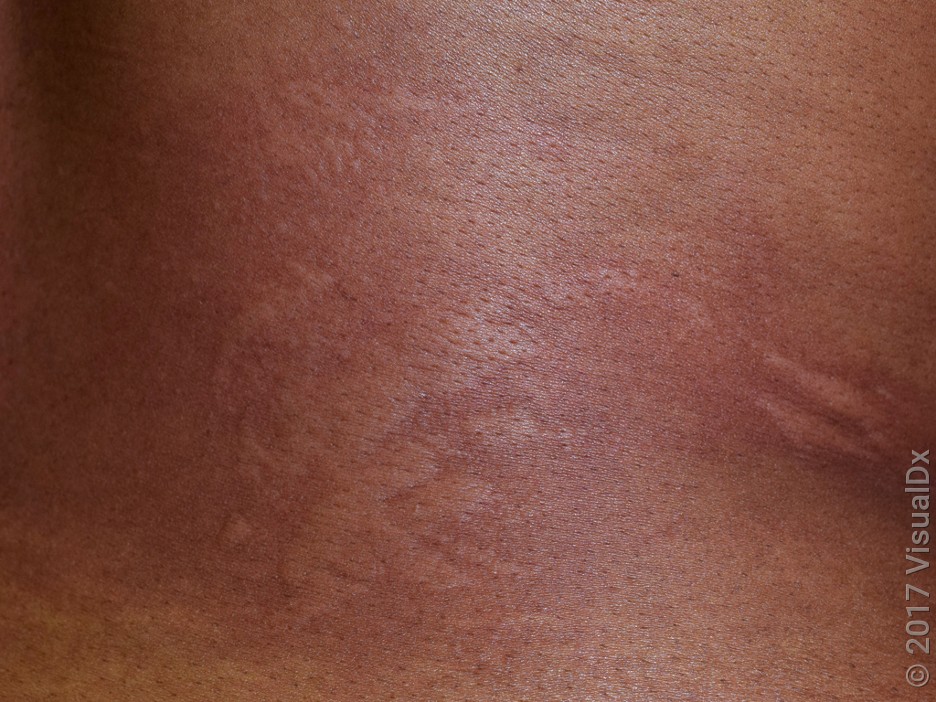

What do bug bites look like?
Bug bites can vary widely from different insect bites and stings. But there are some common skin features. Typically, there’s a quick onset of pain or itching when the bite or sting occurs. Then, depending on the kind of insect that bit the skin, either a single or grouping of small, swollen bumps form. These can be red, violet, or skin-colored, depending on your underlying skin tone. You might even see one or two marks from the bite or stinger. Sometimes, a blister might form at the site.
The rash will be limited to the location of the bite(s). Bug bites tend to affect smaller areas than hives. Sometimes the bite can trigger local hives around the mark, but these will usually not be widespread. The rash and itchiness will usually develop quickly and improve within a few days to a week.
Pictures of bug bites
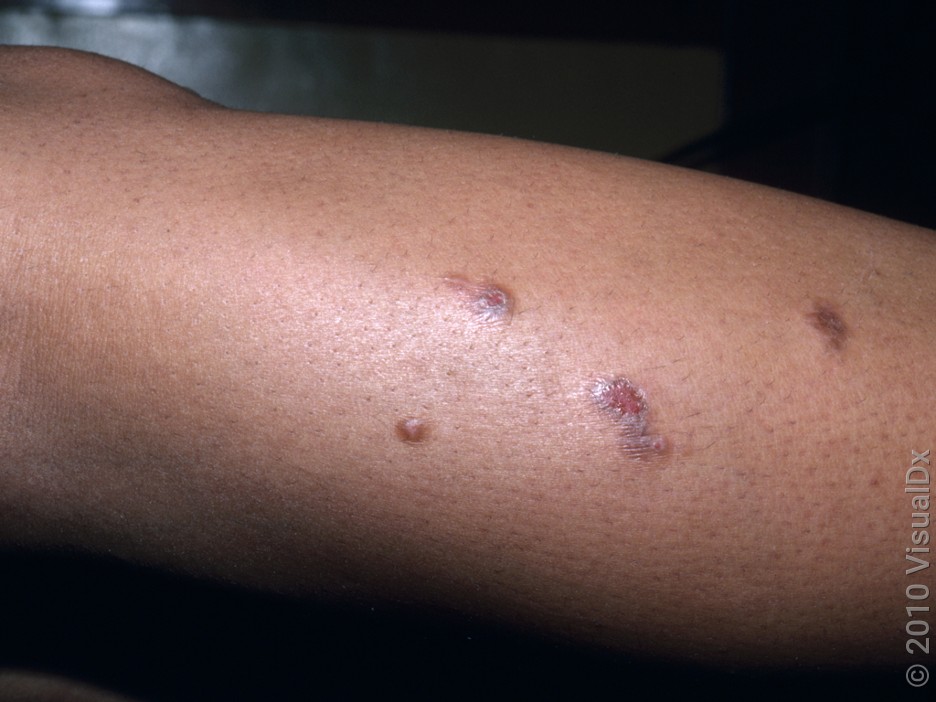
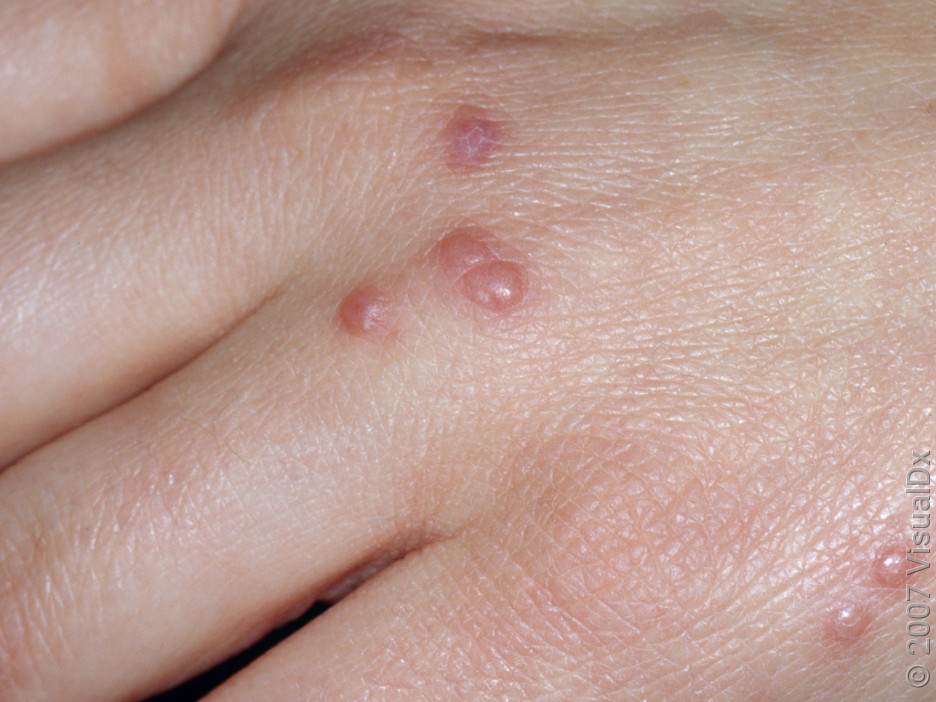
Hives vs. bug bites
To help you understand the differences between hives and bug bites, check out the comparison chart and pictures below.
Bug bites | Hives | |
Causes/triggers | Insect stings or bites | Medications Foods Infections Allergens Stress Unknown triggers |
Symptoms | Itching and pain at the site of the bite or sting | Itching all over the skin |
Location | Anywhere on the skin where an insect has bitten or stung | Can be anywhere on the body and change quickly |
Appearance | Small, raised bumps, usually round Red, violet, or skin-colored May have noticeable bite or sting marks | Raised, swollen patches of skin Red, violet, or skin-colored Can be any shape or size (as small as a fingertip or larger than the palm of your hand) |
Treatment | Wash the bite or sting site with soap and water Topical steroid cream Antihistamines Anti-itch pastes Ice packs Oatmeal baths Cotton clothes | Elimination of the trigger Antihistamines Sometimes oral steroids or a leukotriene receptor antagonist, cyclosporine A, or omalizumab medication is needed Oatmeal baths Cotton clothes |
Bug bites vs. hives pictures

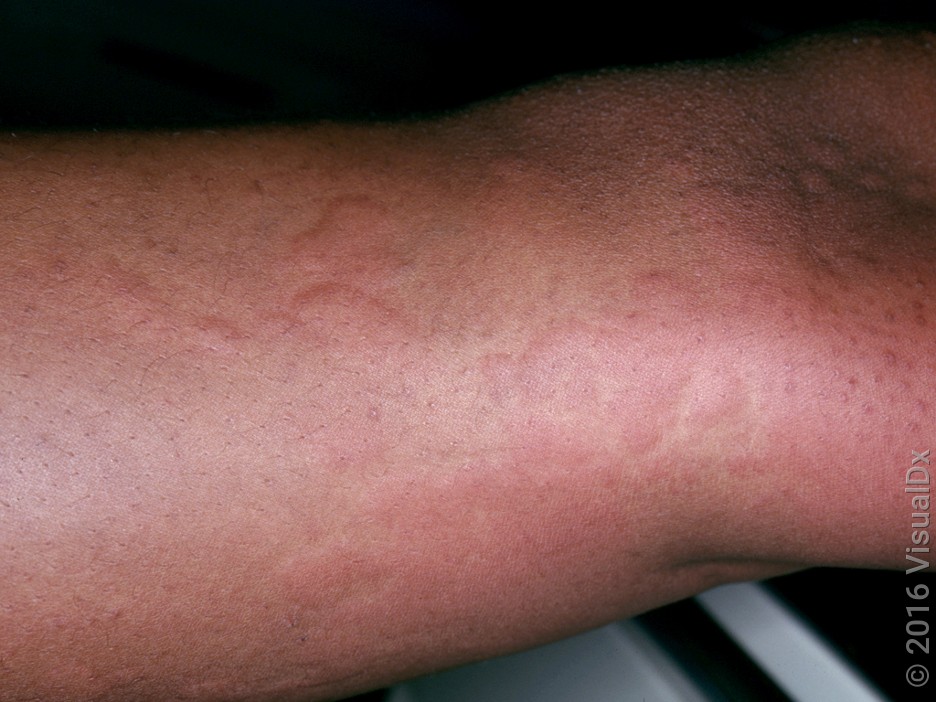

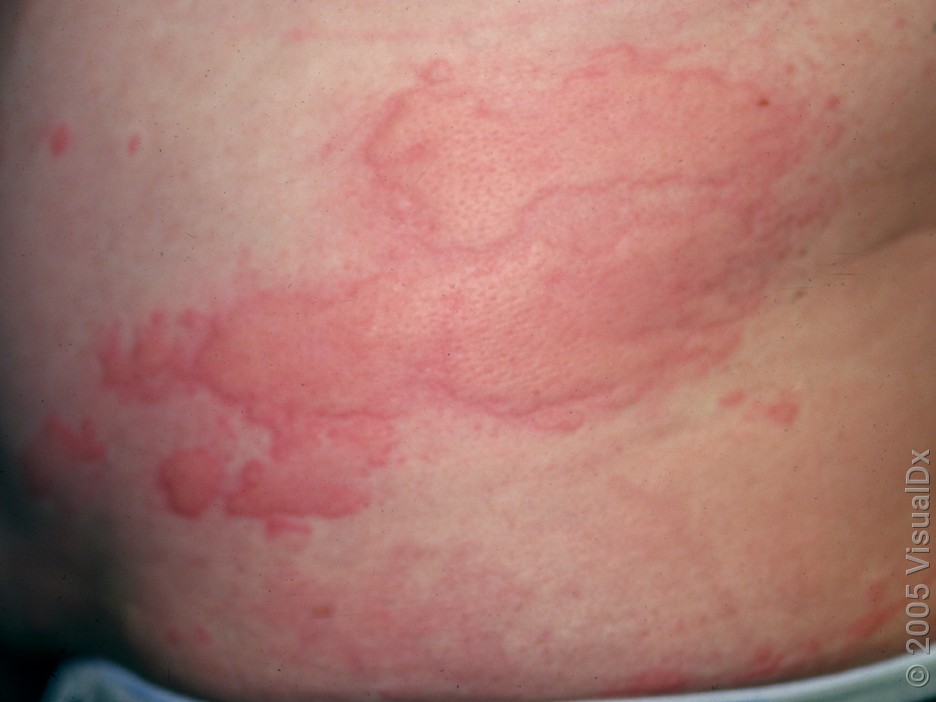
Can bug bites turn into hives?
Sometimes, bug bites can trigger hives to develop. But a bug bite won’t transform into hives. If there are multiple bug bites in a certain area, they may look very similar to hives. But they won’t act the same as hives. The rash and itchiness will remain in that localized area.
When should you seek care for bug bites or hives?
Most of the time, both bug bites and hives can be easily treated at home. Antihistamines and topical treatments like anti-itch creams and oatmeal baths can help with itching. Wearing breathable materials like cotton can help avoid further skin irritation. Depending on the cause, other prescription medications can often help with recurring hives.
However, there are some signs and symptoms that are more worrisome. Get medical attention if you notice the following:
Fever
Red streaking away from the bug bite
Blisters or yellow crusting over the bite or hives
Drainage or oozing from the bite
These signs could mean an infection is developing. It’s important to see a medical professional if they appear.
Sometimes your body may be having more of an allergic reaction from the bug bite or hive trigger. You should go to the emergency department if you’re experiencing any of the following symptoms:
Difficulty breathing
Swollen lips, tongue, or face
Chest pain or a fast heart rate
The feeling like your throat is closing
Vomiting
Dizziness
These symptoms could mean you’re having an anaphylactic allergic reaction. This type of reaction is life-threatening, and you should get medical attention immediately.
The bottom line
Most of us will experience some sort of itchy rash in our life. Telling the difference between hives and bug bites can be tricky sometimes. Hives are red, raised, and itchy patches that pop up anywhere on your body and can be triggered by a variety of things. Insect bites, on the other hand, occur at the site of the bite or sting and include one or multiple red, painful, or itchy bumps. Knowing how they’re different can help you understand how to treat hives and bug bites so you can feel better more quickly.
Why trust our experts?



Images used with permission from VisualDx (www.visualdx.com).
References
American Academy of Dermatology Association. (n.d.). Bug bites and stings: When to see a dermatologist.
American Academy of Dermatology Association. (2024). Hives: Causes.
American Academy of Dermatology Association. (2024). Hives: FAQs.
Kayiran, M., et al. (2019). Diagnosis and treatment of urticaria in primary care. Northern Clinics of Istanbul.
Powers, J., et al. (2023). Insect bites. StatPearls.
Vestergaard, C., et al. (2015). Chronic spontaneous urticaria: Latest developments in aetiology, diagnosis and therapy. Therapeutic Advances in Chronic Disease.
Wedi, B., et al. (2009). Urticaria and infections. Allergy, Asthma, & Clinical Immunology.


